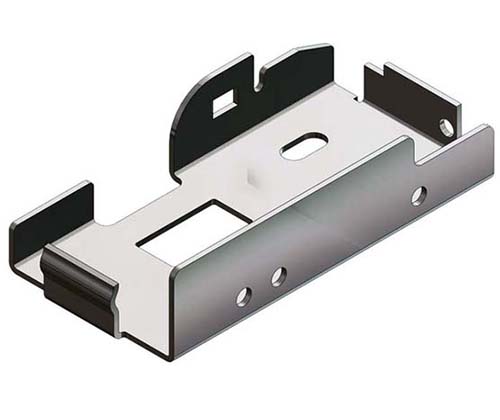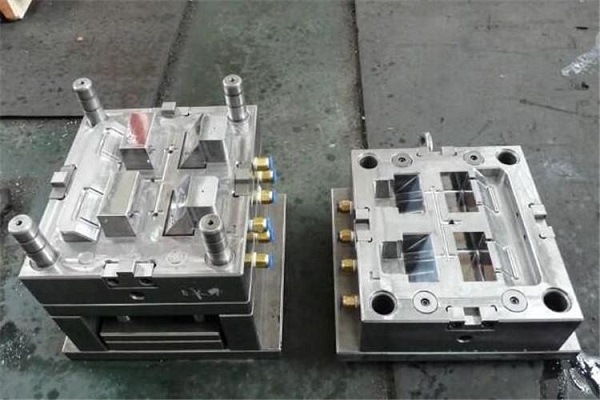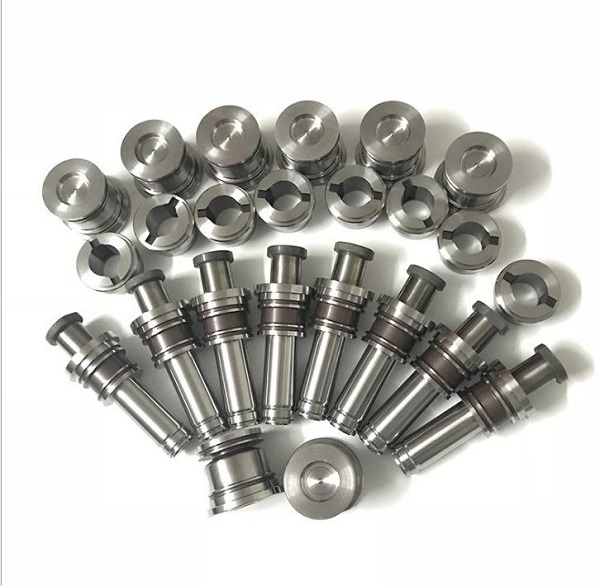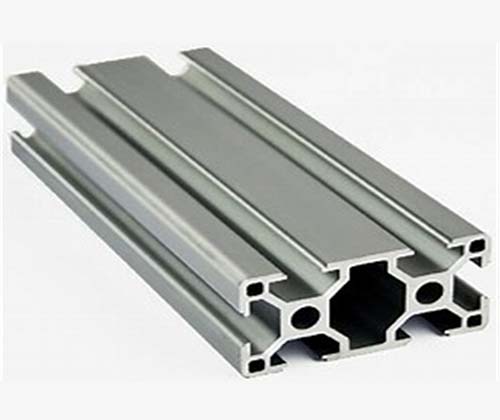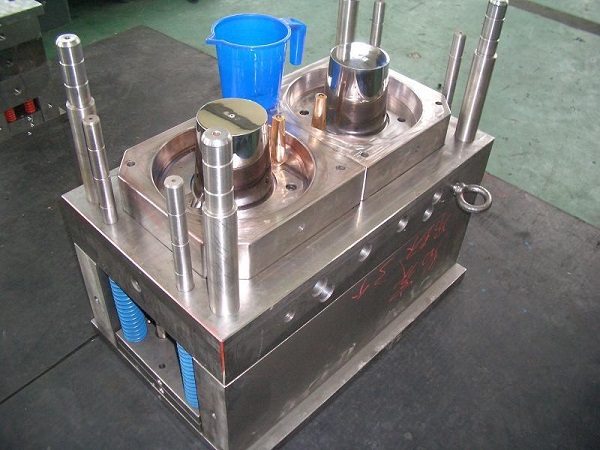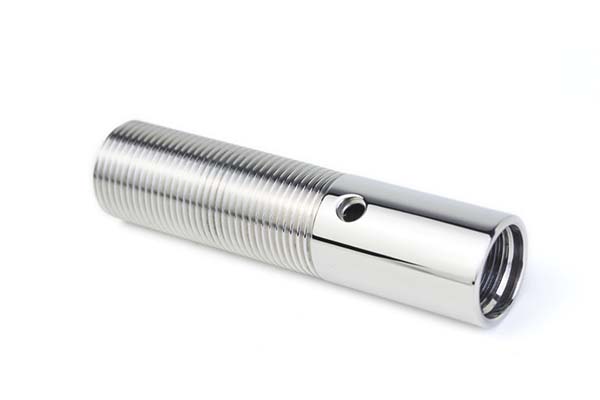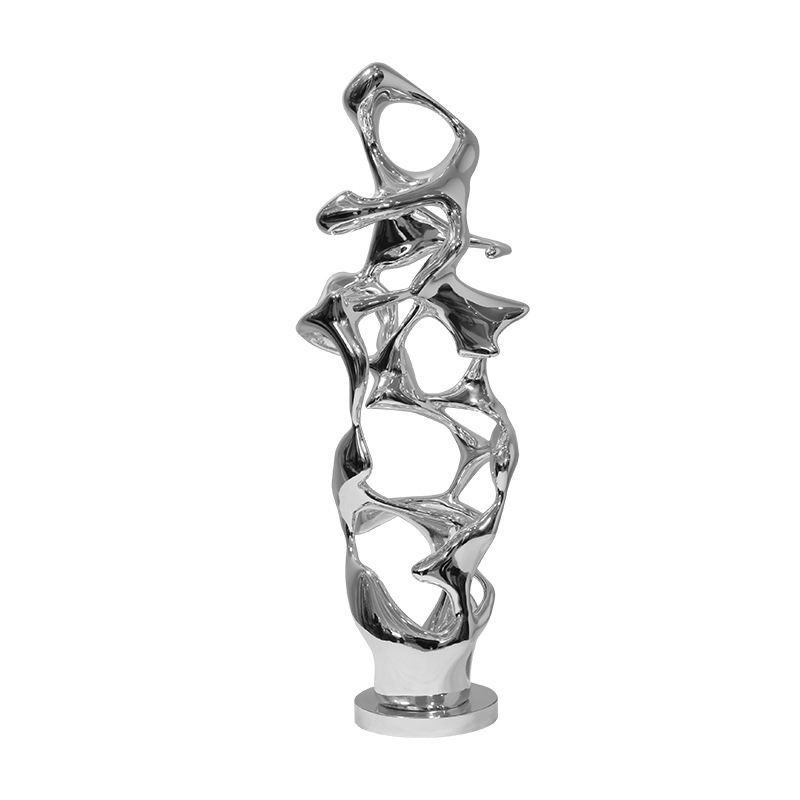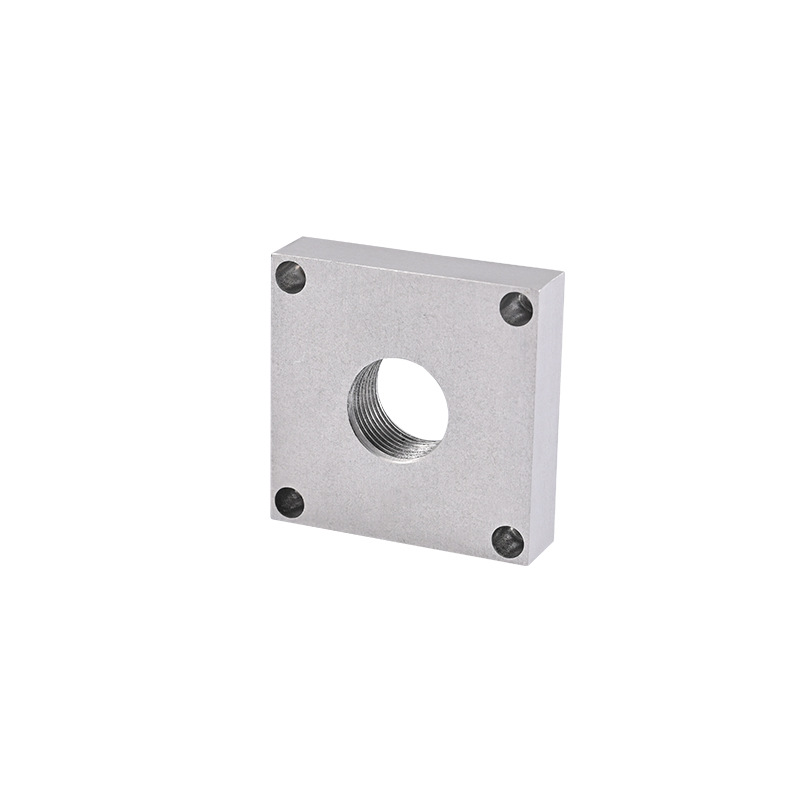Introduction
Perforated metal sheets have become an essential part of modern industrial and daily - life applications, arousing widespread interest. But what exactly is a perforated metal sheet, and why is it so widely used?
In industrial settings, perforated metal sheets are everywhere. They are used in manufacturing plants for machinery guards, providing protection while allowing for visibility and ventilation. In the automotive industry, they can be found in exhaust systems, helping with noise reduction and heat dissipation. For example, in a large - scale auto - assembly factory, thousands of perforated metal components are installed in vehicle exhausts every day to meet environmental and performance standards.
In our daily lives, we also encounter perforated metal sheets frequently. In buildings, they are used in ceilings and walls as decorative elements, adding an aesthetic touch while also serving practical functions like sound absorption. In kitchens, perforated metal trays are popular for baking, as they allow for even heat distribution, resulting in more evenly - cooked food. A recent study showed that about 70% of modern commercial kitchens use perforated metal baking trays.
Given their extensive applications, it's clear that perforated metal sheets play a crucial role. But how are they made? What types are there? And how do you choose the right one for your needs? In the following sections, we will explore these questions in detail to help you gain a comprehensive understanding of perforated metal sheets.
Types of Perforated Metal Sheets
Perforated metal sheets come in various materials, each with its own unique properties and applications. Understanding these different types can help you make an informed decision when choosing the right perforated metal sheet for your project.
1. Aluminum Perforated Sheets
Aluminum perforated sheets are highly popular due to their lightweight nature. Aluminum has a relatively low density, which makes these sheets easy to handle and install. For example, in a large - scale architectural project where the installation of ceiling panels is involved, the use of aluminum perforated sheets can significantly reduce the load on the building structure.
They also have excellent corrosion - resistance. Aluminum forms a thin oxide layer on its surface when exposed to air, which protects it from further corrosion. This makes them suitable for outdoor applications such as building facades and sunshades. In coastal areas where the air is humid and salty, aluminum perforated sheets used in building exteriors can maintain their integrity for many years without significant degradation.
In terms of cost, aluminum perforated sheets are relatively affordable compared to some other metal perforated sheets, especially when considering their long - term performance. They are widely used in building decoration, such as creating decorative wall panels and ceiling tiles. In a modern office building, aluminum perforated ceiling tiles not only add an aesthetically pleasing look but also help with sound absorption. They are also used in the electronics industry for heat dissipation purposes. For instance, in some high - performance computer servers, aluminum perforated sheets are used in the casing to allow heat to escape effectively, ensuring the stable operation of the equipment.
2. Stainless Steel Perforated Sheets
Stainless steel perforated sheets are known for their high strength. Stainless steel contains alloying elements such as chromium and nickel, which enhance its mechanical properties. This makes it suitable for applications that require high - strength materials, like in the construction of industrial machinery guards. These guards need to be tough enough to withstand impacts and protect workers from moving parts.
Their corrosion - resistance is outstanding. Stainless steel can resist corrosion in a wide range of environments, including acidic and alkaline conditions. In the food processing industry, stainless steel perforated sheets are used in equipment such as sieves and conveyors. The high - quality stainless steel ensures that the food products are not contaminated by rust or other forms of corrosion. In the medical equipment field, stainless steel perforated sheets are used in surgical instrument trays and hospital furniture, where hygiene and durability are crucial. They are also widely used in the chemical industry for applications such as filtration in chemical reactors due to their ability to resist chemical corrosion.
3. Carbon Steel Perforated Sheets
Carbon steel perforated sheets offer high strength at a relatively lower cost compared to stainless steel. Carbon steel contains carbon as the main alloying element, which provides good strength and hardness. In the mechanical manufacturing industry, carbon steel perforated sheets are used in the production of machine components such as gears and brackets. Their strength allows them to withstand the mechanical stresses during operation.
In the construction industry, they are used in building structures, especially in load - bearing components where cost - effectiveness and strength are important considerations. For example, in the framework of large - scale industrial buildings, carbon steel perforated beams can be used to support the weight of the roof and other structures. They are also commonly used in the production of 防护栏(guardrails). The perforated design not only provides visibility but also adds a decorative element while maintaining the necessary strength to prevent falls.
Manufacturing Process
The manufacturing process of perforated metal sheets is a key factor in determining their quality and performance. Different manufacturing methods are suitable for different applications, depending on factors such as the material, the shape and size of the holes, and the required precision. Here are three common manufacturing processes:
1. Punching
Punching is a widely used manufacturing process for perforated metal sheets. In this process, a punch press and a die are used. The punch press exerts a high - pressure force, and the die is designed with the desired hole shape. As the punch moves down, it forces the metal sheet against the die, cutting out the holes.
This method is highly efficient for producing large - scale perforated metal sheets with regular - shaped holes. For example, in the production of perforated metal sheets for industrial ventilation systems, where large quantities of sheets with round or square holes are needed, punching can meet the high - volume production requirements. A modern high - speed punch press can produce hundreds of holes per minute, significantly increasing production efficiency.
However, the initial investment in punch dies can be relatively high. Designing and manufacturing a custom - made punch die requires precision machining and high - quality materials to ensure durability and accurate hole - making. If the production volume is not large enough, the high die - making cost can make the overall production cost uneconomical.
2. Laser Cutting
Laser cutting is a more advanced manufacturing process for perforated metal sheets. It utilizes a high - energy laser beam. When the laser beam hits the metal sheet, the intense heat from the laser rapidly melts or vaporizes the metal, creating holes.
This process is particularly suitable for creating complex hole patterns and achieving high - precision requirements. In the electronics industry, where perforated metal sheets with micro - sized holes and intricate shapes are needed for circuit boards and heat sinks, laser cutting can meet these strict requirements. It can achieve hole diameters as small as 0.1 mm with high precision, ensuring the proper functioning of electronic components.
Nevertheless, laser cutting also has its drawbacks. The equipment cost is relatively high, including the purchase of a high - power laser cutting machine and its associated maintenance and operating costs. Additionally, the processing speed is generally slower compared to punching, especially when dealing with large - scale production. This is because the laser beam needs to trace the hole patterns precisely, which takes time, limiting its application in high - volume, time - sensitive production scenarios.
3. Chemical Etching
Chemical etching is a unique manufacturing process for perforated metal sheets. It involves using a chemical solution to selectively corrode the metal. First, a mask is applied to the metal sheet, covering the areas that should remain intact. Then, the sheet is immersed in the chemical solution. The exposed metal areas are gradually dissolved by the chemical reaction, forming holes.
This method is ideal for creating fine and complex patterns on perforated metal sheets. In the production of decorative metal sheets with elaborate designs, such as those used in high - end interior decoration or artistic installations, chemical etching can bring out the most delicate details. It can create extremely fine - detailed patterns with smooth edges, adding an aesthetically pleasing touch.
However, chemical etching has some limitations. The production cycle is relatively long, as the chemical reaction needs time to occur and to achieve the desired depth of etching. Moreover, the chemical solutions used in the process can have an impact on the environment. Special precautions and waste - treatment processes are required to handle the chemical waste properly, which adds to the overall production cost and complexity.
Applications
1. Construction and Architecture
In construction and architecture, perforated metal sheets have a wide range of applications. For building facades, they are often used to create unique and modern aesthetics. A perforated metal facade can not only add an artistic touch to a building but also provide functions such as sun - shading and ventilation. In a recent architectural project of a commercial building in a bustling city center, the use of perforated aluminum sheets on the facade reduced the heat gain by about 30% compared to a solid facade, while creating an eye - catching visual effect with the play of light and shadow through the holes.
For ceiling installations, perforated metal sheets are popular due to their sound - absorbing properties. They can effectively reduce noise levels in large indoor spaces such as shopping malls and exhibition halls. In a large - scale shopping mall with a high - ceiling design, perforated metal ceiling panels reduced the noise reverberation time by 2 - 3 seconds, creating a more comfortable shopping environment. They also offer good ventilation, helping to keep the indoor air fresh. In addition, they are durable and can withstand the test of time, requiring less maintenance compared to some other ceiling materials.
2. Automotive Industry
In the automotive industry, perforated metal sheets play important roles in several aspects. In vehicle radiators, perforated metal fins are used to increase the surface area for heat transfer. This allows the engine coolant to dissipate heat more efficiently, ensuring the engine operates at an optimal temperature. A study on automotive engine cooling systems showed that using perforated metal fins in radiators can increase the heat dissipation efficiency by up to 15%, improving the engine's performance and reliability.
As for vehicle interiors, perforated metal sheets are used in seat upholstery and door panels. The perforations on seat covers enhance breathability, making long - distance driving more comfortable. In a survey of car owners, about 80% of them reported that perforated seat covers made their driving experience more pleasant, especially in hot weather. In addition, perforated metal door panels can reduce the weight of the vehicle while still maintaining the necessary strength, contributing to better fuel efficiency.
Yigu Technology's View
As a non - standard plastic metal products custom supplier, Yigu Technology specializes in providing customized perforated metal sheet solutions. We understand that different projects have unique requirements. Whether you need perforated metal sheets in aluminum, stainless steel, or carbon steel, we can offer a wide range of materials to choose from.
Our advanced production equipment enables us to create various hole shapes, including round, square, and hexagonal, with high precision. We can also meet different specifications, ensuring that the perforated metal sheets fit perfectly into your project. For example, we have successfully produced perforated metal sheets with extremely small hole diameters for high - end electronic device applications.
Moreover, our professional technical team is dedicated to providing excellent pre - sales and after - sales services. We work closely with clients from the initial design stage to the final product delivery, ensuring high - quality products and on - time delivery. With Yigu Technology, you can be confident in getting the perfect perforated metal sheets for your projects.
FAQ
1. What are the common materials for perforated metal sheets?
Common materials for perforated metal sheets include aluminum, stainless steel, and carbon steel. Aluminum sheets are lightweight, corrosion - resistant, and cost - effective, suitable for applications like building decoration and electronics heat dissipation. Stainless steel sheets offer high strength and excellent corrosion - resistance, used in industries such as food processing, medical equipment, and chemical engineering. Carbon steel sheets provide high strength at a relatively low cost, often used in mechanical manufacturing and construction, like in machine components and building structures.
2. How to choose the right perforated metal sheet for my project?
When choosing a perforated metal sheet for your project, consider several factors. First, think about the project requirements, such as the needed strength, if it requires high - strength materials for load - bearing structures. Second, consider the use environment. For example, in a corrosive environment, stainless steel or aluminum perforated sheets are more suitable. Also, take the budget into account. Carbon steel sheets are usually more cost - effective, while stainless steel can be more expensive. Aesthetic requirements, like the desired appearance for architectural decoration, should not be overlooked either.
3. Can perforated metal sheets be customized?
Yes, perforated metal sheets can be customized. Manufacturers can produce products with different materials, such as aluminum, stainless steel, or carbon steel according to customer needs. They can also create various hole shapes, including round, square, hexagonal, etc. Different specifications like sheet thickness, hole size, and hole pitch can be customized. Additionally, surface treatments such as painting, galvanizing, and polishing can be provided to meet specific application requirements.
